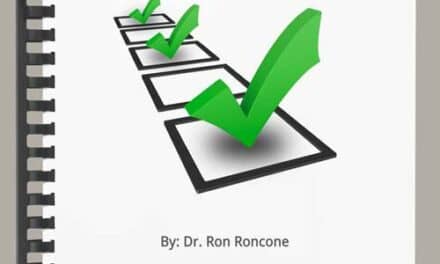Orthodontist Mart McClellan, DDS, MS, and Investment Advisor Tim Streid, CLU, owners of the financial management firm Macro Wealth Management, are out with a new book, written specifically for dental professionals planning for retirement. Orthodontic Products spoke to the two about the book, Your Retirement Smile: The Treatment Plan for Pay-Cut Prevention in Your Golden Years, and their financial planning system for orthodontists.
Orthodontic Products: You start the book saying that almost everything orthodontists have been advised about being financially successful is a half-truth or misinformation.
Tim Streid, CLU: If the financial information that’s been espoused for years is so good, why is it that less than 5% of Americans retire comfortably when they’re ready to retire? I think that speaks volumes. Financial success is not an individual product. We’ve all been led to believe that to achieve financial success, we just have to find the magical product, whether it’s a 401(k) plan, or the mutual fund or stock of the day. And, if we chase the rate of return long enough, we’ll build up this big pile of assets. Well, even if you do build up the big pile of assets, the biggest problem people face at retirement is how do I turn that pile of assets into an income stream. If you don’t have exit or distribution strategies in place, you’re going to take a significant pay cut in retirement.
OP: What kind of pay cut are we talking about?
Streid: According to the most recent survey put out by the ADA, the average dentist in the country retires on about 50% of their pre-retirement income. So, that means if they were making $300,000 the day they retired, once they step into retirement, they’re taking an income of $150,000. Now, that’s a tremendous difference for anyone—and no one likes a pay cut. And, I doubt that any one of them were saving 50% prior to retirement. That means there’s going to be adjustments in retirement whether it’s standard of living, not being able to travel as much, not being able to spoil the grandkids and family, whatever it may be. And Mart’s made the comment many times, in the dental-orthodontic world, it’s a blessed profession. Professionals make a very good income throughout their career. So, it’s not an income problem as far as being able to build the wealth. The problem is that the money that’s being allocated and saved into their various accounts is being used very inefficiently.
OP: How do 401Ks play into this pay cut?
Streid: The blind faith of throwing maximum contributions into a retirement plan is very, very costly to individuals. Most every dentist and orthodontist we talk to has been advised by their accountant or other advisors that the key to financial success and a successful retirement is to maximum fund your 401K. We typically see a 401K safe harbor plan with a profit-sharing which typically allows them to get upwards at $55,000 to $56,000 a year into that plan. And, then if you have excess cash, you can do a cash balance plan on top of it which could allow you to add another six figures to that plan.
Well, wealth is not about a number. We talk about regardless of the number that you build out there, you have to have an exit strategy on it in order to spend and enjoy it the way that you want with total peace of mind.
People tend to focus on a number that they want to achieve in retirement. Let’s say that that number’s $5 million, to keep the math simple. For most that sounds like a great retirement, right? $5 million a big number, right? The problem is without an exit strategy, by default, you are going to accept some form of the safe withdrawal, or Monte Carlo distribution on the funds, which today is roughly 3%. So, at 3% on $5 million, that’s only $150,000 a year in income. if the orthodontist, or dentist, was making $500,000 at the time of retirement, that’s very inadequate. If they have the right exit strategies in place that same $5 million could provide anywhere from 7% to 10% distribution of those assets. That’s a huge difference.
BONUS CONTENT: Streid and McClellan talk about why hiring a spouse into the practice and diverting their salary into a 401k as part of your retirement planning is not always the best financial decision.
OP: One of the concepts you emphasize in the book is a macro or holistic approach to retirement planning. What does this approach entail?
Mart McClellan, DDS, MS: The macro approach is what we call the “Financial Treatment Plan.” In an orthodontic office, when we treat our patients, we follow the treatment plan in sequence: patient comes in, do the exam, do the records, put the braces on, do the adjustments, rubber bands, and so forth. The end result is a very good result. The same thing goes in the macro picture of personal finances. When you look at the entire picture, and you follow the sequencing of these rules that we follow, you can look at the plan in its entirety, and the end result will be full income replacement in retirement and no pay cut.
Streid: When we talk about a macro approach, personal finance is so much more than just a retirement plan, an investment, life insurance, or real estate. It’s all of those things, and more. Our financial treatment plan is broken down into three components: protection, savings, and growth. And, then in combination with a person’s debt and cash flow, these five areas are where every financial decision is made.
Now, typically, in those five areas of finance, there are a number of advisors out there that can have input. Starting with your accountant, your banker, your attorney, your investment advisor, your life insurance agent, your real estate person, on down the line. Each of those individuals will have expertise in maybe one or two areas of that model. But, the question we always ask, when was the last time you had all of your advisors that are part of your team seated around a table focused on you, and your situation? The answer is never. As a result, many individuals will get conflicting information on what they should do; and, often they’re left with competing opinions. Typically the advisor that has the strongest opinion wins out. When it comes to making financial decisions, there’s really no room for personal opinion. It should be based on facts. And, that’s what our system brings to the table: It eliminates opinion and sales hype, and it can lay out the facts for individuals to make informed decisions on what they want to do with their money.
OP: One of the things you discussed in the book is that a lot of financial planning is based on best-case scenario: You’re going to live a long life, you’re going to be able to enjoy your money, nothing’s going to go wrong. You point out that financial planning should account for possible failures.
Streid: The list of life events that can crop up and change a financial plan overnight are numerous—starting with the obvious ones like a disability or other health issue. It could be a lawsuit due to a car accident that you were in. If you don’t have the proper liability insurance in place, your financial situation is turned upside down forever. It could be changing tax laws. It could be volatile investment markets, going up and going down. It could be changing interest rates. It could be runaway inflation. I mean these are all events that we live with, day in and day out. We may not encounter all of them, or we may encounter them at different times of our life. But, if our plan is not insulated against them, to ensure that no matter what happens that we’re going to be okay, our financial plan can be turned upside down.
One example: The daughter of an orthodontist out in California asked me to sit down with her dad. He was 75 years old and retired at the time. Six months before I met with him, his retirement was $12 million. When I sat down with him, it was down to $2.5 million. This was in 2008. And what I found out is that the majority of his stock, or his investments, was concentrated in five individual stocks, all in the financial sector. Well, 2008, financial stocks got decimated. They went from $30 a share to less than $1 a share. He’s 75 years old, he’s got the onset of Parkinson’s disease, as well as mental degeneration, and he is stressed out. All he can do is sit in front of a TV all day long, and watch the ticker go across on the bottom of the business network.
Those are the real-life things that happen. And, they happen quite often because people are not protected properly.
Your Retirement Smile: The Treatment Plan for Pay-Cut Prevention in Your Golden Years is now available on Amazon. OP





